We often think that our yoga practice needs to fit a specific style, or it needs to look a certain way, but your yoga is truly your own journey. Therefore, it’s useful to attend classes and learn from expert teachers so you can master certain movements and achieve a personal sense of inner peace and achievement that you can take and use for your self-development.
Perhaps you’d now like to explore creating your own yoga sequence?
Exploring Self-Taught Yoga
You may find yourself limited on time at some point, unable to attend your usual class and wanting to find a way to still fit in your daily yoga routine. We’ve put together some hints and tips to easily and quickly put together your own routine that can become your go-to sequence when you are tight for time.
First, when building your own yoga sequence, you want to consider the following
- Time - How long do you want the routine to be
- Structure - Consider your favorite poses to include
- Focus – Consider what will your sequence comprise – breathwork, movement, pace?
- Relax – Remember to allow time to relax and decompress at the end of your practice
If you haven’t already, it’s valuable to start considering your personal yoga space. Creating a dedicated yoga space is crucial to establishing a successful home practice. The idea is to design a space that entices you to your mat, especially when you’re finding time for a quick yoga flow. We’ve created a handy guide to getting started with Creating Your At-Home Yoga Space.
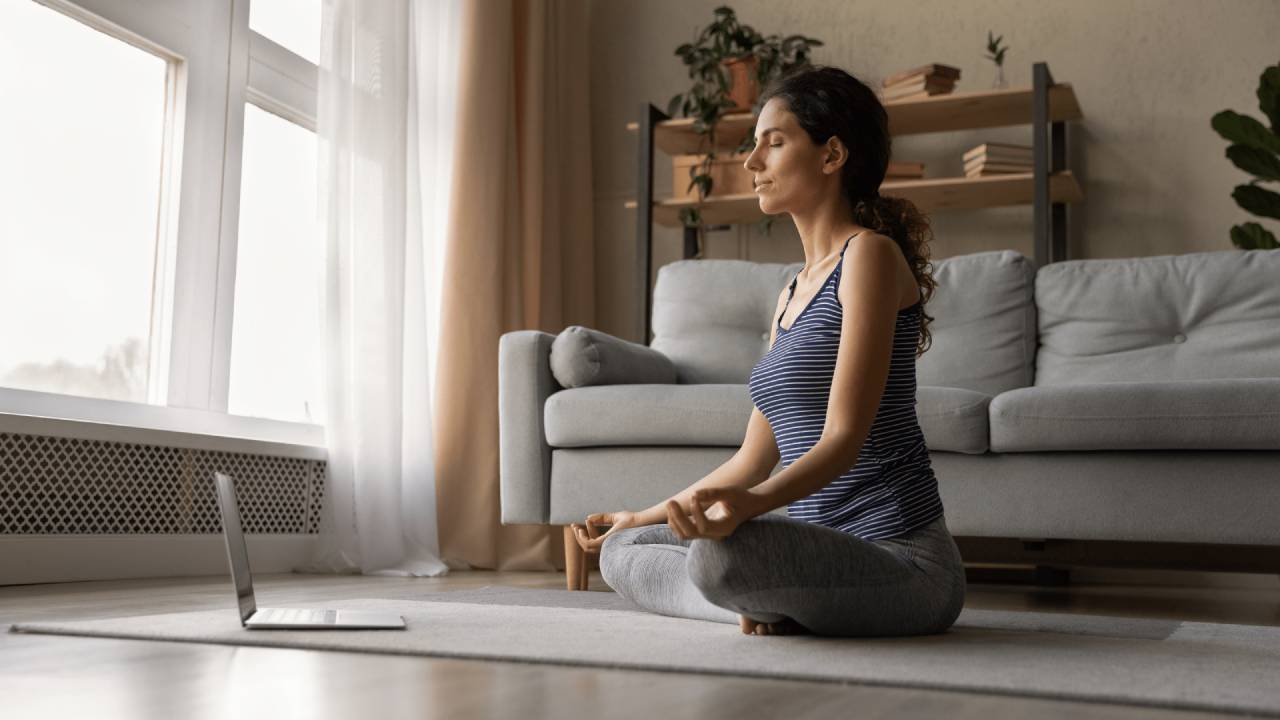
Remember to Breathe
Sit down, take a moment, take some breaths, and center your mind. When you feel still and grounded, ask yourself what it is that you need today:
- Do you feel strong and full of energy? Perhaps trying a more energetic vinyasa flow may be what you need.
- Do you find your body or mind (or both!) needing some rest and perspective? Restorative yoga would be a perfect fit here.
- Perhaps you want to focus on a specific area of your practice or simply looking to improve your overall yoga sequences – there’s plenty of scope for us to all continuously improve. The key is consistency and belief in ourselves.
After you have determined what you need in your home practice, let’s start planning your “class plan”.
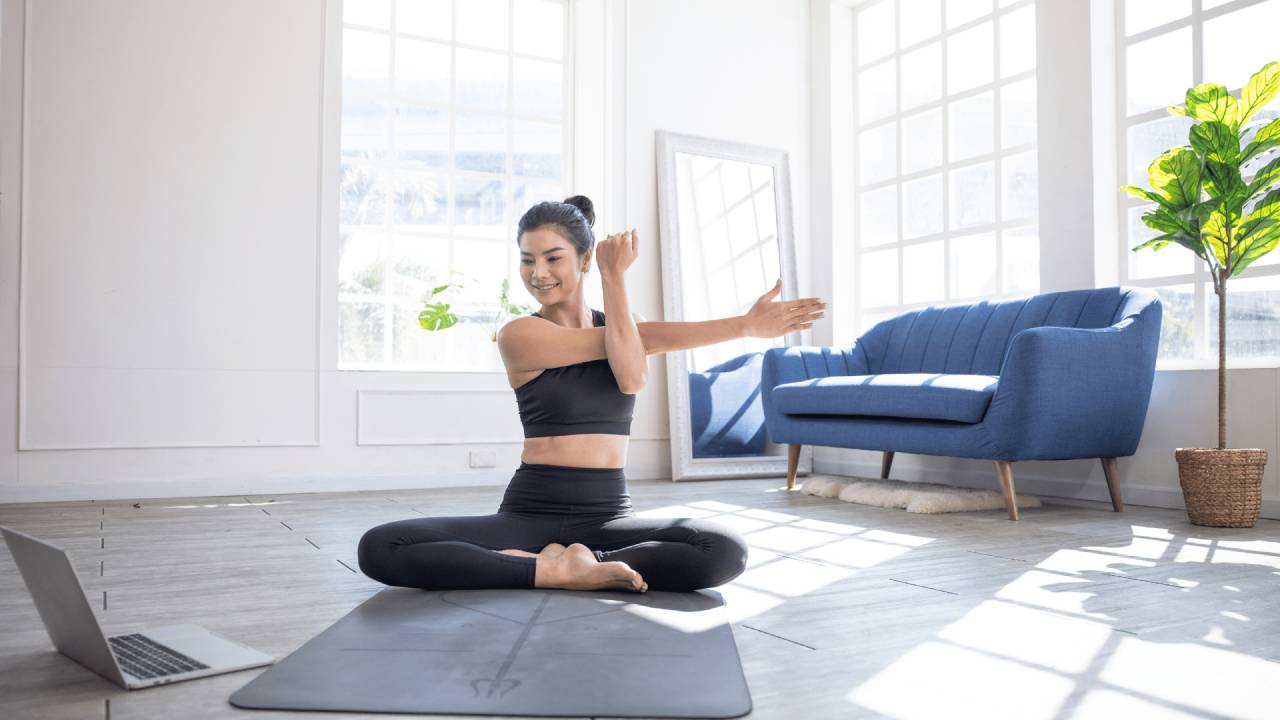
Building Your Yoga Class Plan Template
You may find that you’d like to focus on a specific area of your body for your flow, but at the beginning, it’s more ideal to try to include various poses you know from your regular class: twists, standing poses, seated poses, backbends, restorative poses and more.
Yoga Rules and Guidelines - Consider your poses
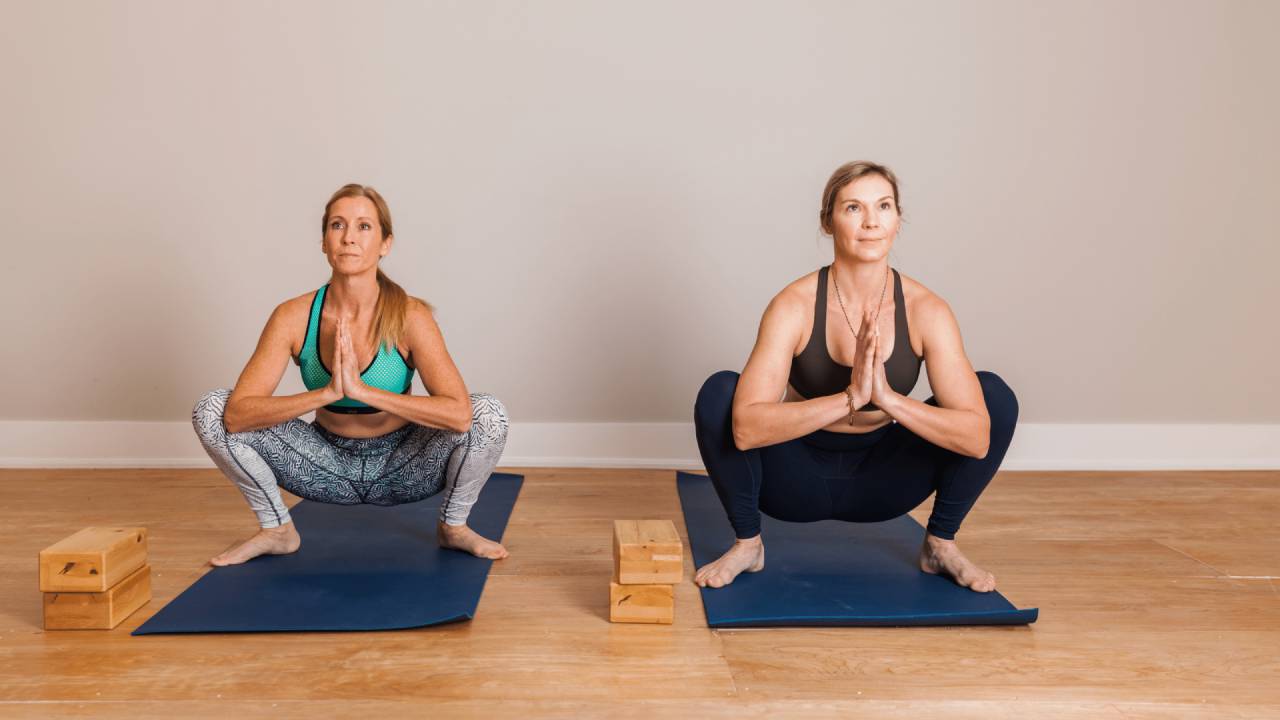
HIP OPENERS
If you’re working on hip opening, you’ll want to focus on poses that specifically address the hips.
- Garland Pose (Malasana)
- Cobbler’s Pose (Baddha Konasana)
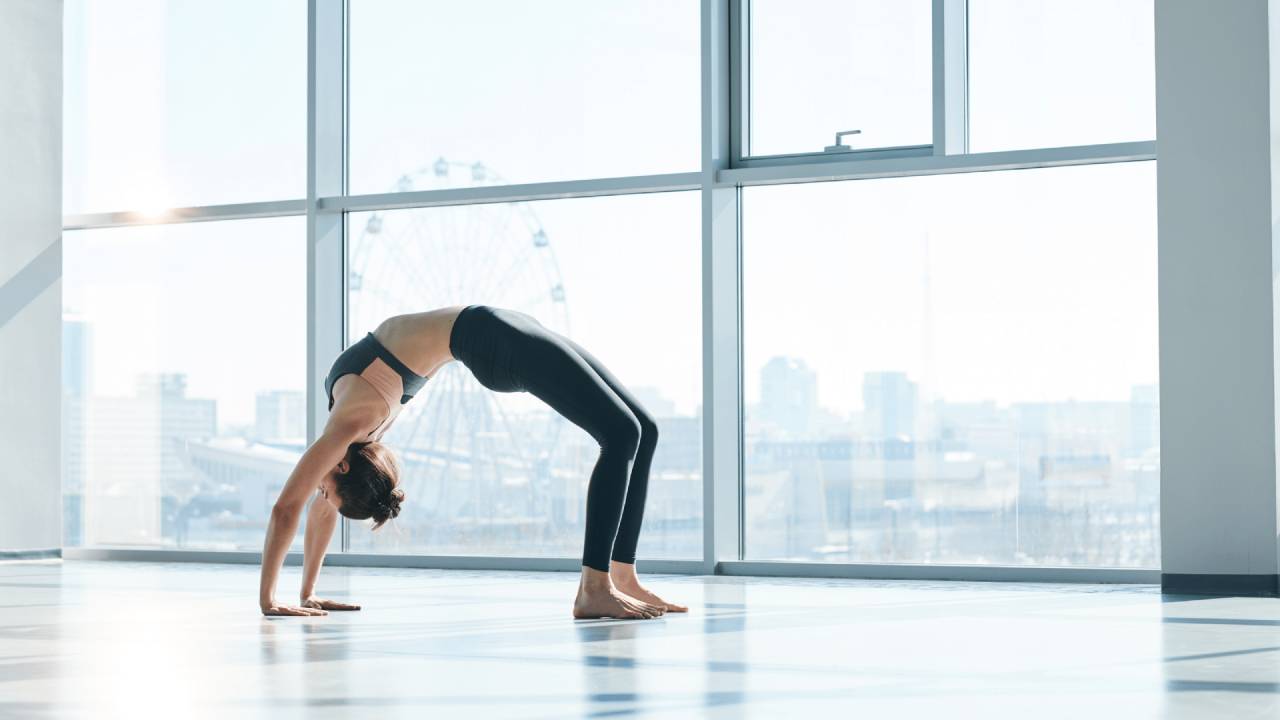
BACKBENDS
Look at opening your heart with backbends, helping build strength and flexibility of the spine.
- Wheel Pose (Urdhva Dhanurasana)
- Cobra Pose (Bhujangasana)
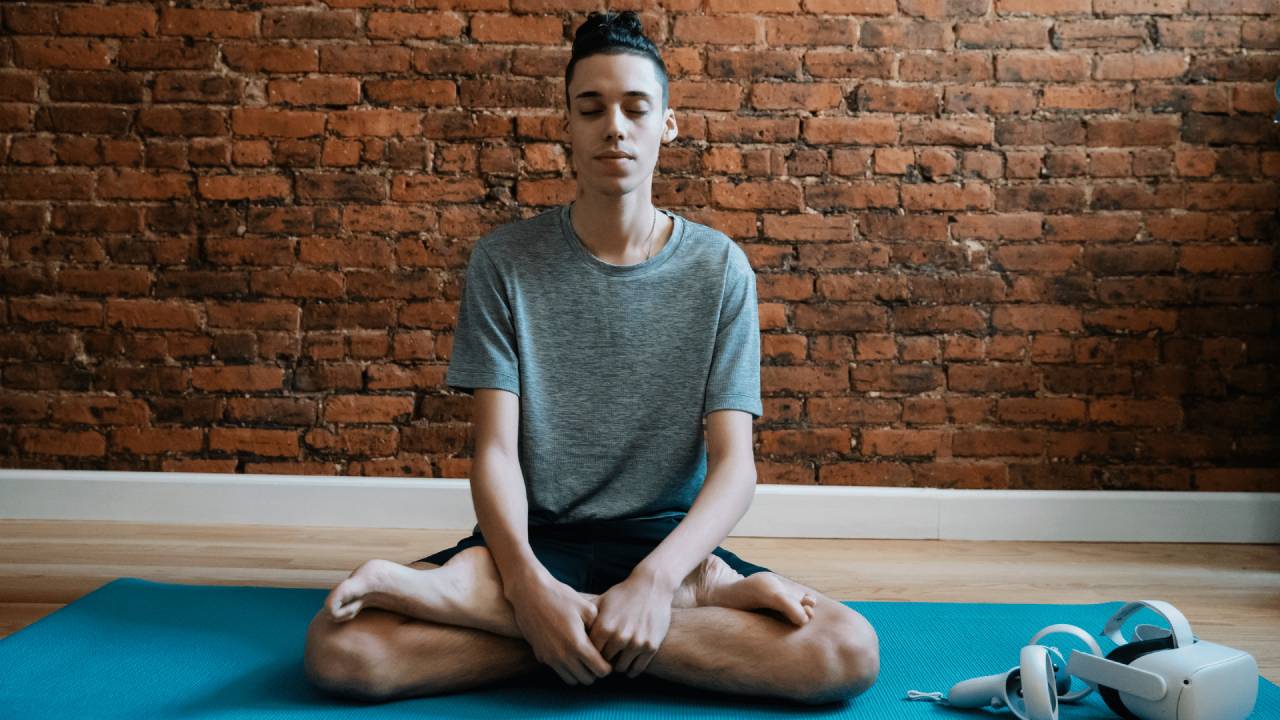
SEATED POSES
Seated poses work on the flexibility of our legs, back, and hips. Sitting provides us with a sense of steadiness and openness.
- Lotus Pose (Padmasana)
- Peacock Pose (Mayurasana)
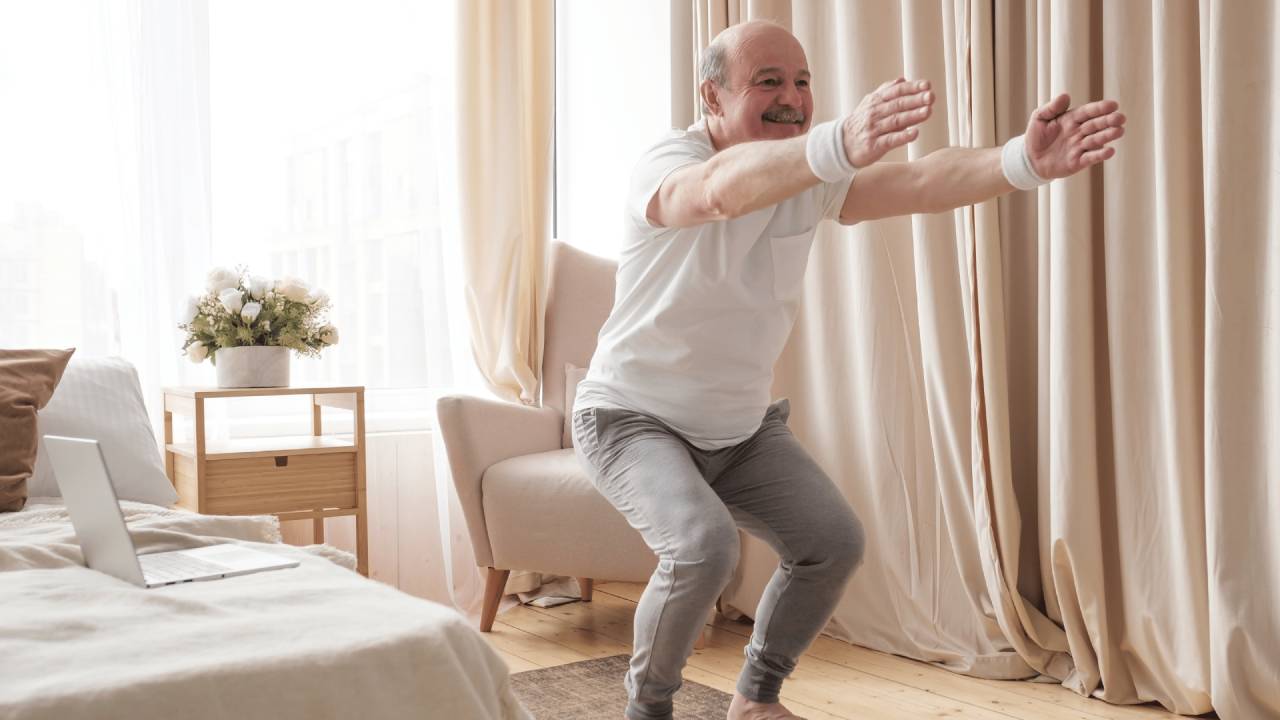
STANDING POSES
Standing yoga poses are great for building balance and control of your core as well as an overall strong foundation.
- Warrior Pose (Virabhadrasana)
- Chair Pose (Utkatasana)
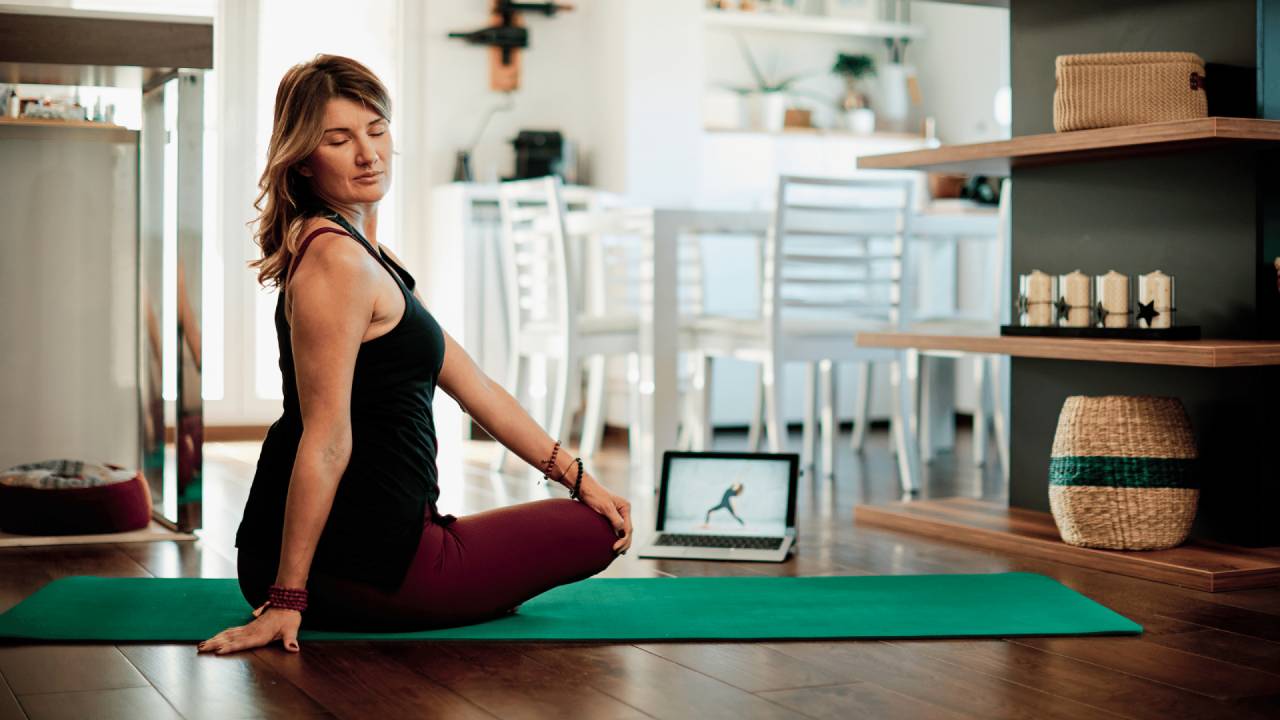
TWISTS
Twists are a great way to relieve any back pressure, as well as neutralizing the spine and increasing the overall mobility of your back.
- Eagle (Garudasana)
- Marichi’s Pose (Marichyasana III)
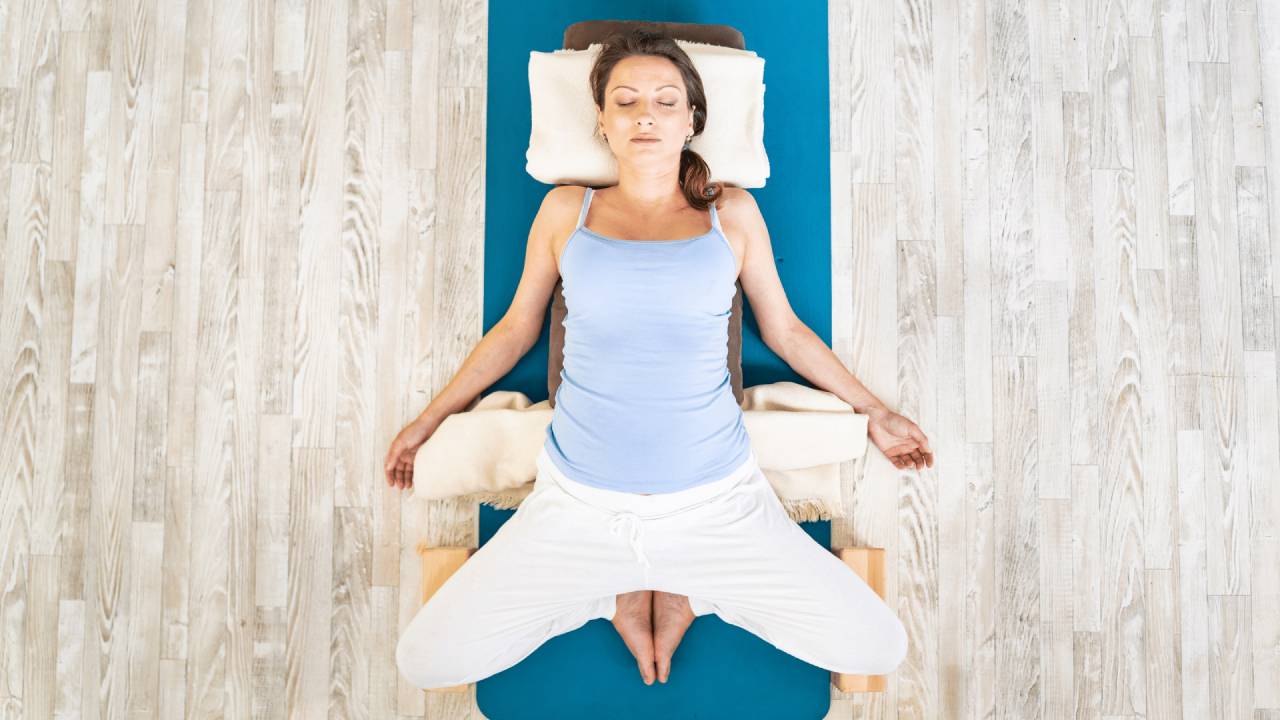
RESTORATIVE POSES
During a Restorative yoga sequence, you stretch whilst fully relaxing and allow tension to slowly be released.
- Balasana (Child’s Pose)
- Reclining Bound Angle Pose (Supta Baddha Konasana)
Whatever makes up your homemade sequence, there is no right or wrong - It’s you, and your mat. A safe, sacred, and peaceful space.
Building your best yoga warm-up sequence – An Example Flow
If you’re still not sure quite where to start, or struggling for creativity, here is an example of a basic flow practice for beginners:
- Slowly warm up your spine with Cat/Cow (Marjaryasana-Bitilasana)
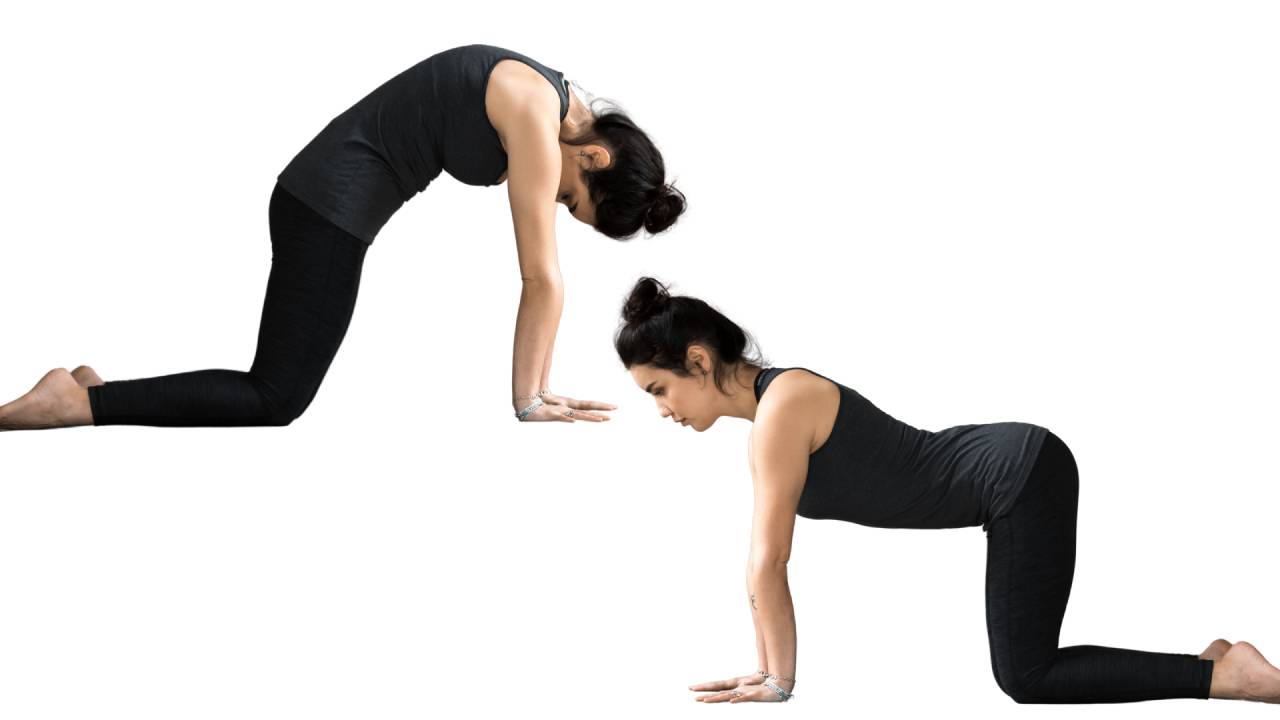
- Bring yourself on all fours with your hands stacked underneath your shoulders.
- Push your weight into your hands to maintain a strong position.
- Bring your shoulders away from your ears and press the tops of your feet into the mat
- As you inhale, drop your belly, pushing your chest forwards. At the same time, tuck your tailbone under, lift your head and look slightly up.
- As you exhale, now untuck your tailbone, rounding up through the spine and gently tuck your chin in towards your chest.
- Downward Facing Dog (Adho Mukha Svanasana)
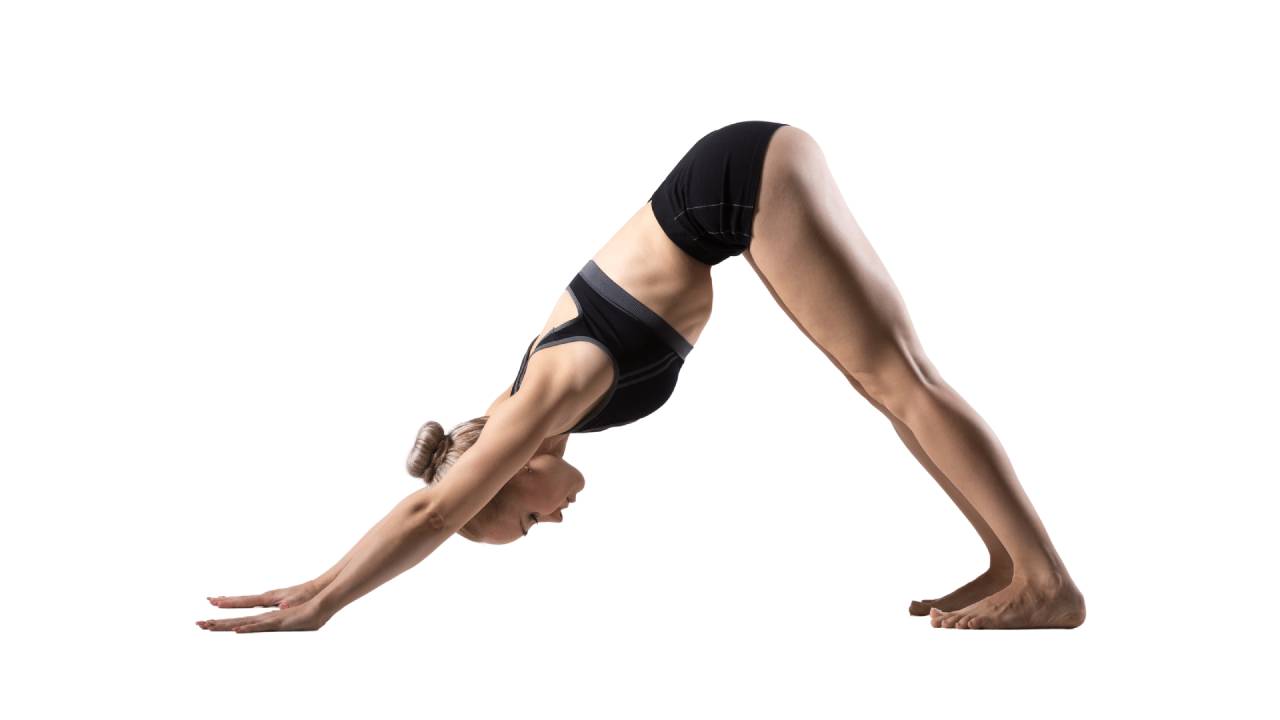
- Start on all fours, with hands underneath shoulders, in-line with wrists.
- Step one foot back at a time to come into Plank. Engage your core so your body and back are in one long straight line.
- Lift your hips to the ceiling - Drop your head towards your mat.
- Press your palms and heels to your mat.
- Standing Forward Fold
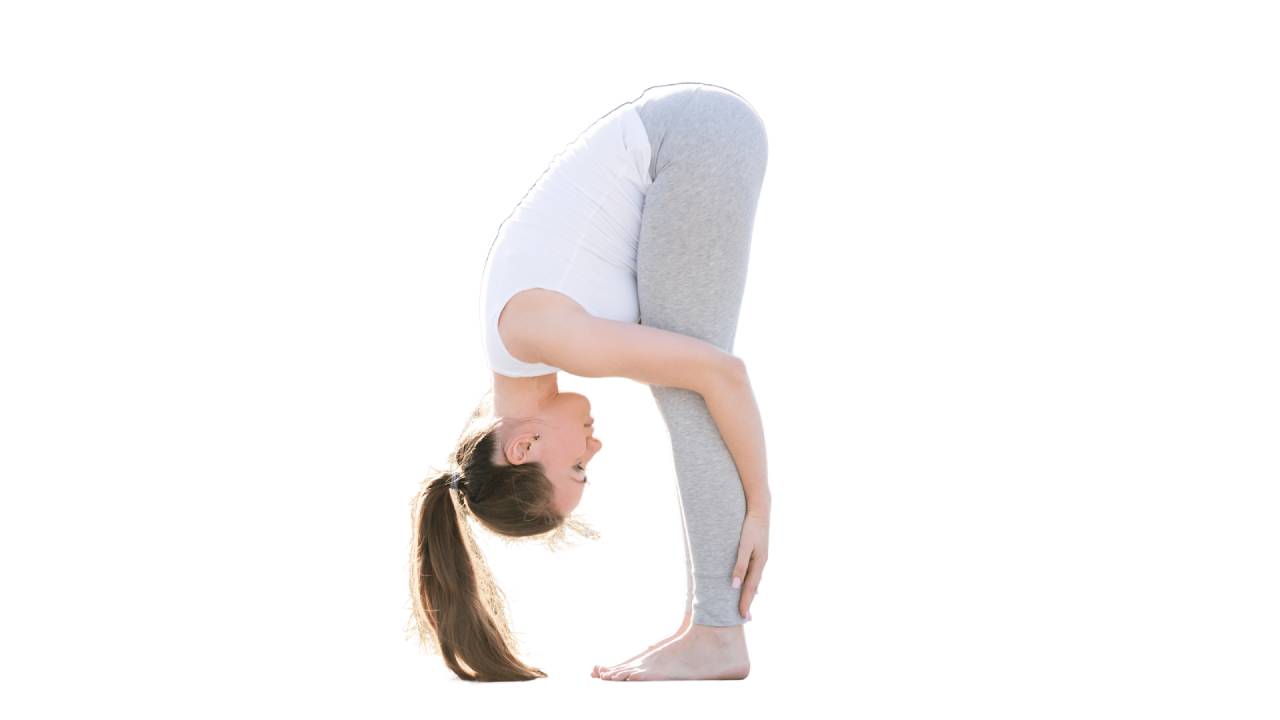
- Start by standing, with your hands on your hips.
- Bend forward at the hips, lengthening the front of your torso.
- Bend your elbows and hold on to each elbow with the opposite hand. Let the top of your head hang down. Keep your knees soft.
- If it is comfortable to have the front of your torso long and your legs straight, place your palms or fingertips on the floor beside your feet.
- Slightly lift and lengthen your torso with each breath. Try to lean down deeper into the pose.
- Warrior II (Virabhadrasana II)
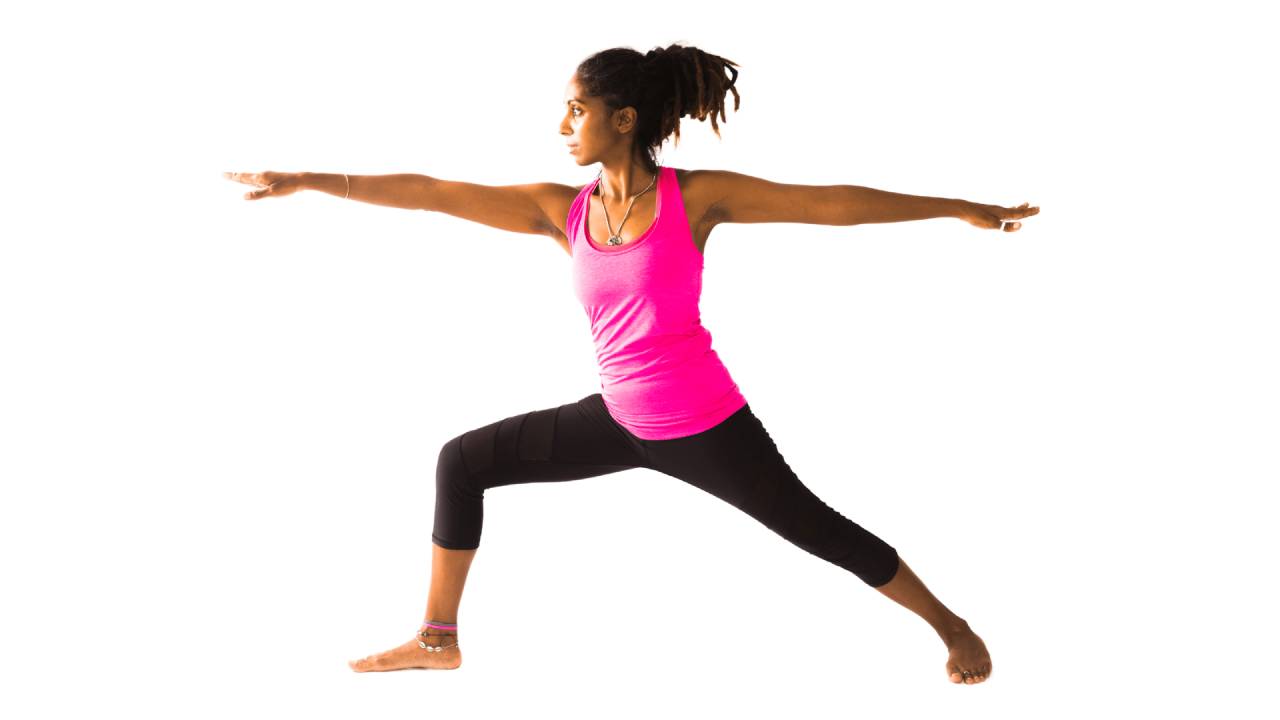
- Start by standing at the front of your mat and take a big step back with one foot.
- Bend your front leg so that your knee is stacked over the ankle and turn your back foot out to a 90-degree angle.
- Turn your torso to the side and open your arms out in opposite directions. Look over your extended front fingertips.
- Repeat on the other side.
- Triangle (Trikonasana)
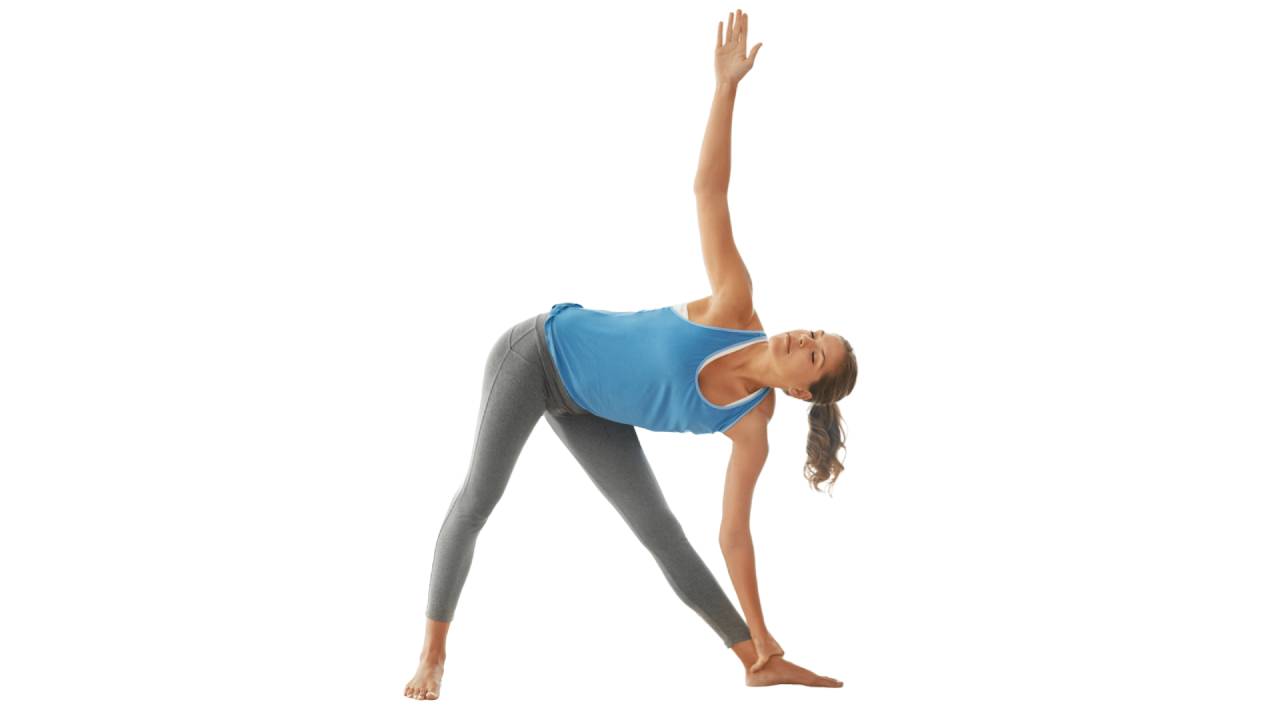
- Stand with your feet apart, a little wider than hip-distance.
- Raise your arms on either side, keeping them parallel to the ground.
- Bend sideways to one side, reaching and touching your foot with your hand, raising the other arm upwards.
- Repeat with the other slide
- Extended Side Angle (Utthita Parsvakonasana)
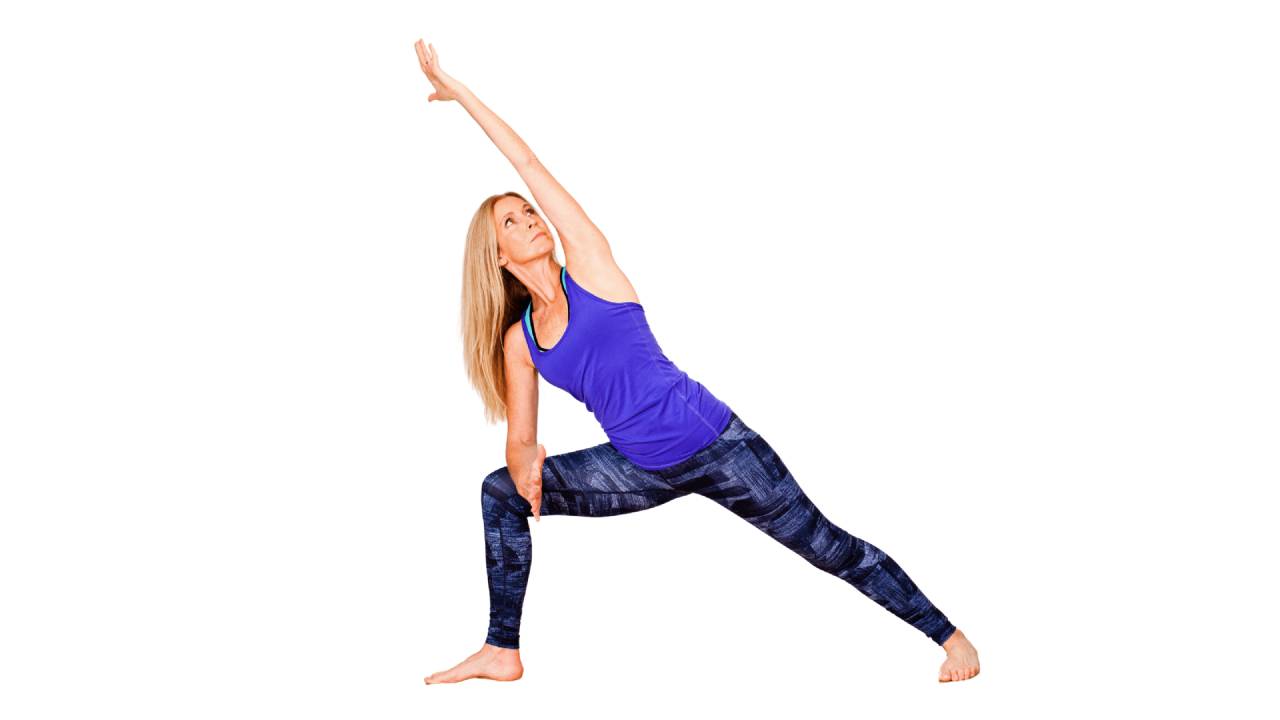
- Begin by standing. Step your feet into a high lunge. Raise your arms parallel to the floor and out to the sides, palms down.
- Keep your front foot facing straight out in front and turn your back foot out to 90 degrees. Align the right heel with the left heel. Make you’re your front knee is in line with your front ankle.
- Rotate your upper torso to face the same way as your back foot. Bend your front knee over your front ankle
- Extend the same side arm as your front foot straight up toward the sky and turn the palm to face toward your head, lengthening the side of your body. Turn your head to look at your raised palm.
- Press the palm of your lower hand into the floor, actively pushing your knee against your arm.
- Cobra (Bhujangasana)
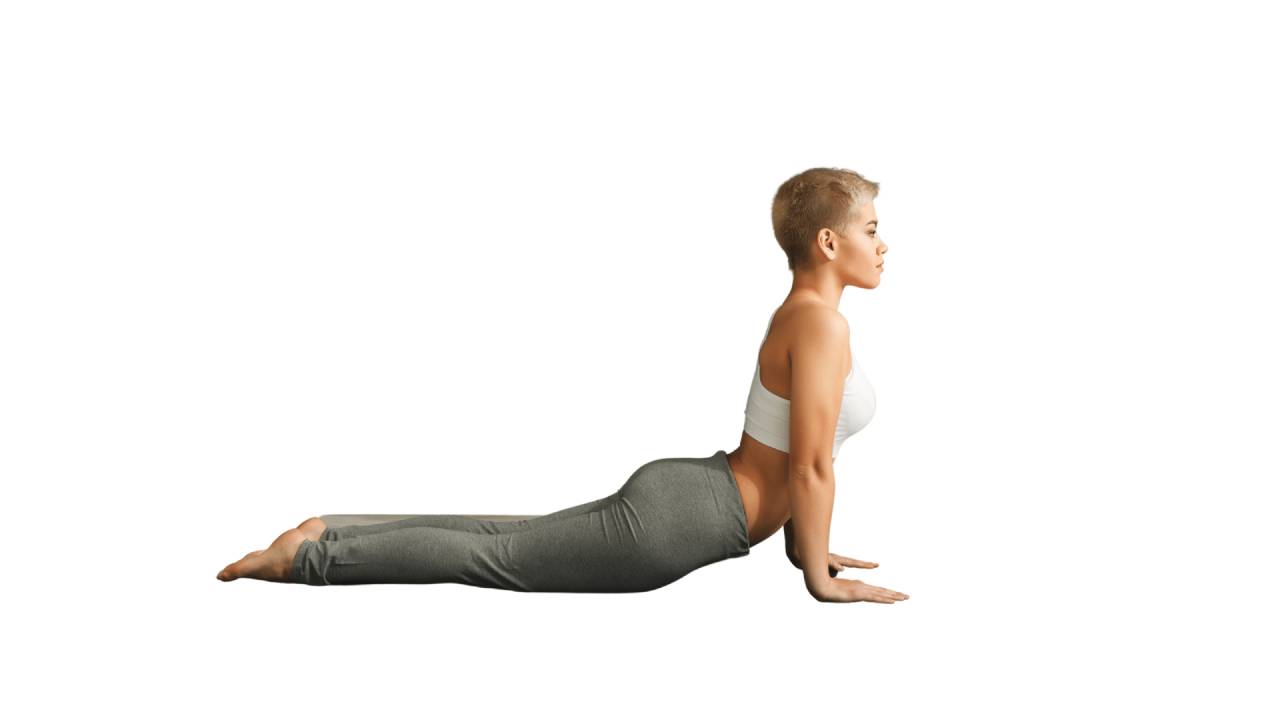
- Lay on your stomach and untuck your toes, keeping the tops of your feet on the floor. Place your hands under your shoulders. Keep your legs straight.
- Press into your palms and lift your chest off the floor using your arm and back muscles. Keep your elbows tucked in to your sides.
- Keep your leg straight and the tops of the feet pressed into the mat.
- Allow time at the end to finish with a restful Corpse pose (Savasana)
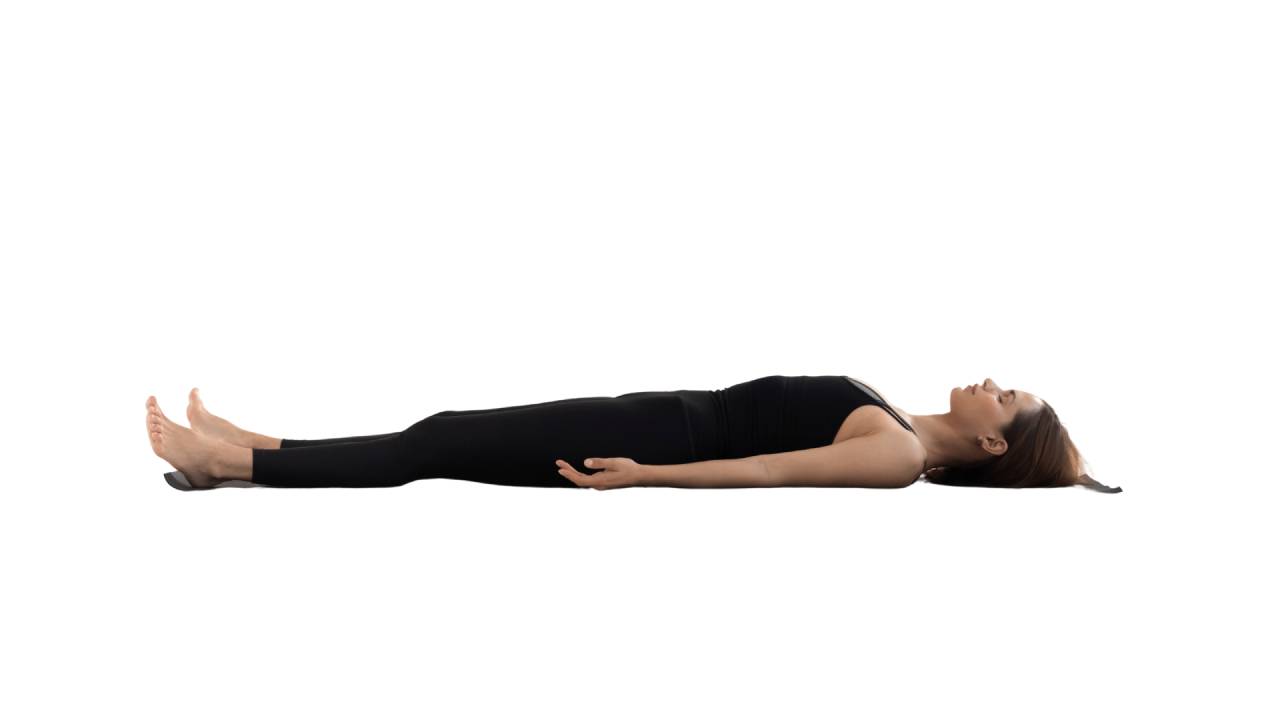
- Lay yourself down, back on the floor. Separate your legs and let your feet fall to either side.
- Lay your arms alongside your body, hands also out to the side, palms facing upwards.
- The key here is relaxing your whole body, including your face. Let your body feel heavy.
- Try to stay in this position for several minutes. Use this time to free your mind and really switch off. Set yourself a timer, if you need.
Music can play a valuable role in our healing and holistic journeys, so make sure you have set yourself a soothing playlist to help accompany your newly created home practice. If you’re looking for ideas, we’ve put together the ultimate 2021 yoga playlist to help motivate your flow.
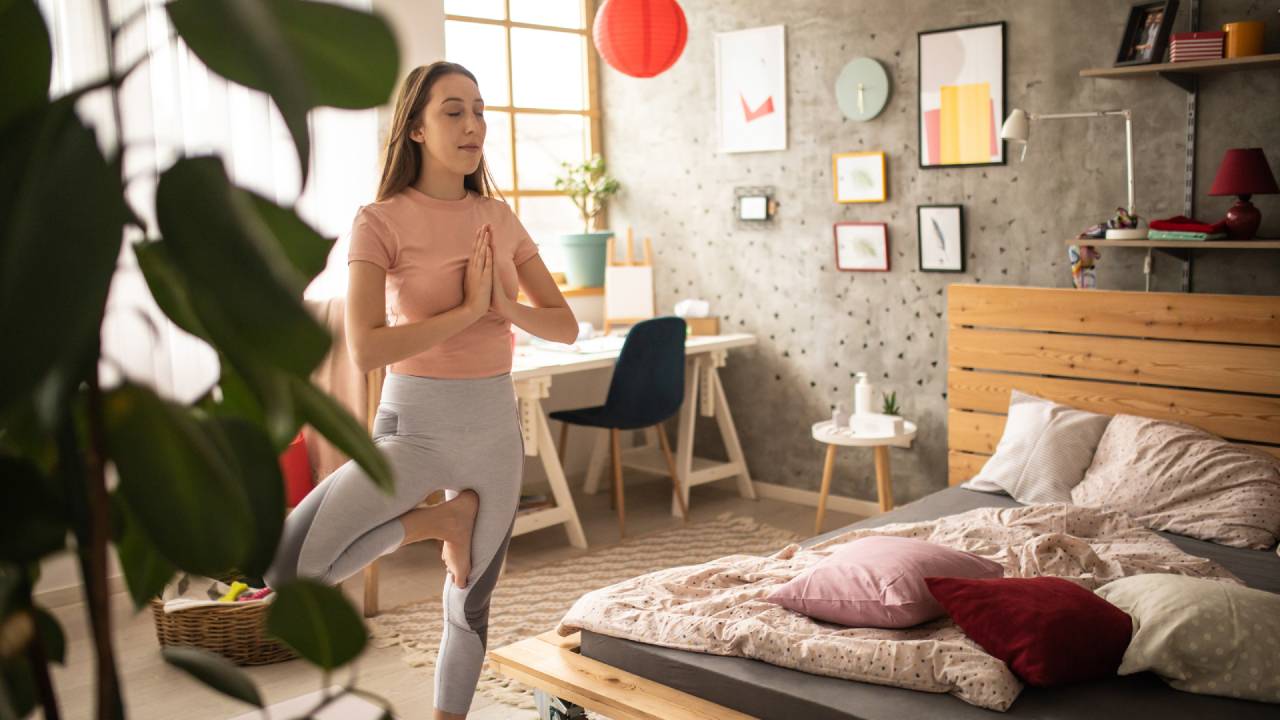
Free Form Yoga – It’s in Your Hands
When you practice at home, it takes mental discipline, commitment, and focus. When you make the decisions to start creating your own flow at home, consider setting yourself a specific time and day, so it’s in your calendar and you’ve committed some much-needed space to yourself.
Once you’ve begun trialing your own yoga flows, you can start to explore different poses and routines, depending on what you are looking to get out of your free form yoga. Yoga goes beyond your body and fitness; the freedom it brings takes you to a new level of wellness, helping you to explore your practice, your power and yourself.
We’ve put together some handy guides to support you at every stage of building your own yoga sequence:
-
Yoga For Beginner Practice [link to Blog Post]
-
Yoga For Intermediate Practice [link to Blog Post]
-
Yoga for Advanced Practice [link to Blog Post]
Staying up to speed with the latest Yoga poses and Guidelines
Even during your self-taught yoga routines, it’s good to keep your mind active and stay up to speed with the latest developments. Yoga is a wonderfully progressive journey, which means there are always new things to explore and learn. Working with an expert teacher can help you master those tricky new moves that you’ve been looking at to further develop your personal sequences.
VIVAYA offers live-streamed classes, personalized, one-on-one sessions for all abilities, including specialized workshops that can support your health, wellbeing, and more. Whether you’re just starting your wellness journey or looking to take your practice to the next level, VIVAYA has an online safe and welcoming sanctuary of classes and community waiting for you.
Check out our schedule of live, online Yoga classes here
You will receive carefully guided classes, covering all aspects of yoga and healing, at different abilities, allowing you to go at your own pace. All VIVAYA yoga & meditation instructors are experts in their depth of knowledge, compassion and patience, and intuitive dedication to working with you on your individual journey.
Try 14 days of FREE, unlimited yoga & wellness classes, and experience a new, welcoming online community.
